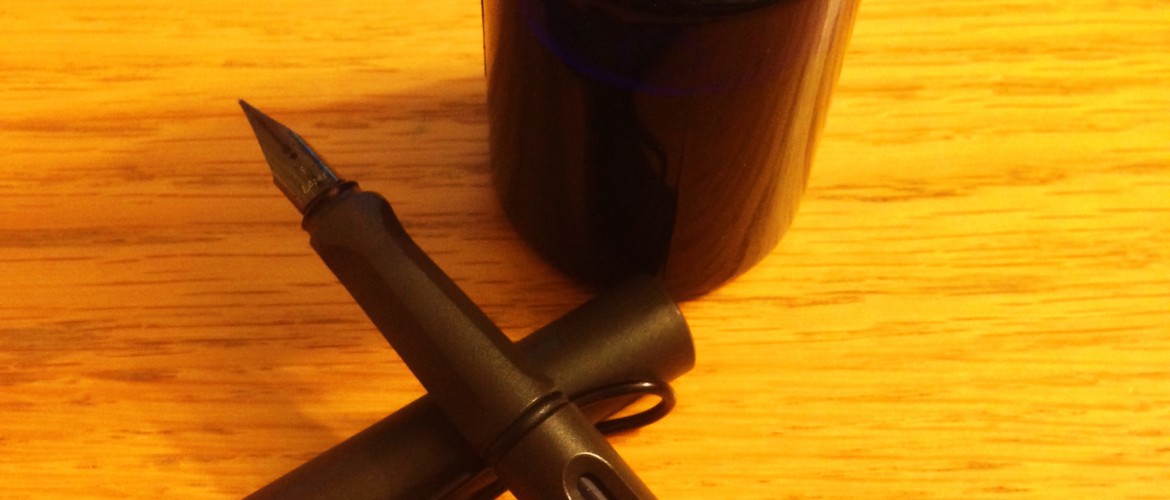By: Deacon Joseph Fessenden, Diocese of Nashville
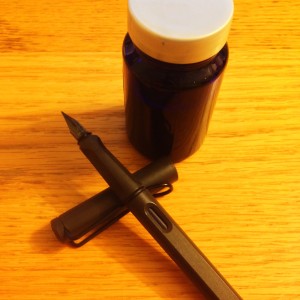 I not infrequently tell people of my belief that we can find analogs to the spiritual life all over everyday life if we keep our eyes open and take the time to reflect on them. I was chatting with one of the guys here at the seminary (a year or so ago now) and reflecting on how much I enjoy the ritual of filling a fountain pen. Initially, I was just waxing poetic about how pleasant the ritual is, but we realized as we talked that there’s an analog to the spiritual life to be found.
I not infrequently tell people of my belief that we can find analogs to the spiritual life all over everyday life if we keep our eyes open and take the time to reflect on them. I was chatting with one of the guys here at the seminary (a year or so ago now) and reflecting on how much I enjoy the ritual of filling a fountain pen. Initially, I was just waxing poetic about how pleasant the ritual is, but we realized as we talked that there’s an analog to the spiritual life to be found.
Since I was young, I have enjoyed fountain pens. I couldn’t tell you why. Perhaps it is something of the eccentricity that using one in the modern age implies. Perhaps it’s the old fashioned-ness of them (I’ve always liked old things – being a historian and a techno-geek is an odd combination, I know). Now, at least, part of it is the fact that they don’t fit into the modern disposable culture. Fountain pens last for years. Good ones last a lifetime – or multiple lifetimes.
Ok, enough waxing poetic. Let’s get to the point.
Disclaimer: Don’t use this reflection as instructions for filling a fountain pen. I am skipping a few steps here and there for the sake of brevity (or as close to brevity as I ever get).
A fountain pen frequently runs empty. The ink on the paper is liquid instead of a gel. That richness of color sinking into the paper comes at a price: the reservoir runs dry far more frequently than the disposable alternatives. Usually, I fill the pen before the reservoir is actually dry, though; since I use it to take notes in class, I need to make sure there is always enough ink to make it through the next day.
Step the first: Empty the reservoir of the last little bit of ink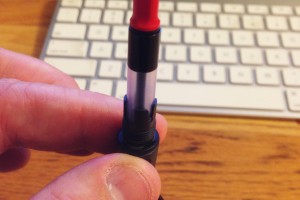
Like I said, I always pull out my bottle and refill before the ink runs dry. This serves not only to make sure that my pen keeps up with my needs, but also to avoid clogs if I let ink dry inside the pen. I have allowed the latter a few times (oops). To fill the pen, though, the first thing I have to do is empty what is in there already. We are often reminded by the spiritual masters that we must begin prayer by emptying ourselves. We must open ourselves entirely to God so that he has room to work in our lives. It’s not just a question of getting rid of the old to make new, it’s a question of truly emptying ourselves to make room for God to fill us up.
When I fill my pen, I am squeezing out the last bit of ink that was already in there even though it is the same ink that I’m adding to the pen. When we immerse ourselves in prayer, in communion with the Lord, or in Scripture, we must always approach it entirely new. We cannot allow it to be stale or old; then, we will just remain circling where we are, and we will always have a little bit where God isn’t allowed to touch. He must be allowed to surprise us always.
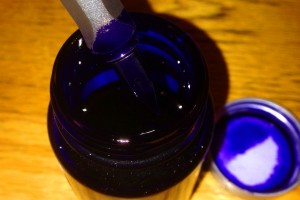 Step the second: Dip the pen all the way.
Step the second: Dip the pen all the way.
When I first started using refillable fountain pens instead of replacing the little tiny ink cartridges, I was always afraid of getting the nib too deep when I filled the pen. I thought I was just supposed to put the tip into the ink. I did this for a long time, and I always wondered why I couldn’t get the pen to fill right or write right. Then, I was told that I need to get the whole nib into the ink; I can’t be afraid of getting the grip of the pen covered in ink. Once I learned that simple little fact, I could fill my pens with the best of ’em, and then write with them like I wanted.
When we start out in the spiritual life, we seem to have the same tendency. We want to tiptoe in. We want to just touch the edge until we prove to ourselves it’s worth it. We are afraid to jump in with everything we are until we know it’s safe. The problem is, I think so many people get frustrated when they try to grow in the spiritual life because they do this, and the only time that the spiritual life is fulfilling and truly life-giving is when we truly jump in. We have to give it everything we are; we have to dip ourselves in entirely, or we will always come away half-filled and wondering why our spiritual life is so dry.
Step the third: Draw in the ink – several times.
Many fountain pens require you to fill and empty the reservoir a few times to get it topped up. One of mine, in particular, has a plunger that I have to push up and down three or four times before the reservoir is full. I just have to keep it submerged in the ink and pump until it’s full. Many times, I think we try to go deeper into the spiritual life, but we only try once, and we expect to be full. We don’t realize we have to keep building. Both the pen and the spiritual life are like priming an artesian well; the work at the beginning requires quite a bit of effort (and trusting God’s plan) until we notice that we are full.
Step the fourth: Clean the excess ink.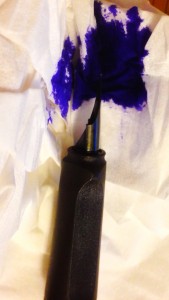
Since I started filling my pens right, I had to face the fact that there is always ink all over the grip of the pen. It would be disastrous to just try using the pen like this. Imagine my beautiful blue ink all over a nice white dress shirt! So, we have to wipe the ink. This is another one of those areas I was just too gentle when I started. I tried to gently dab the ink clean with a tissue. I kept wondering why I still made a mess of my fingers when I wrote with the pen. We have to look for those extra bits that we have in our spiritual journey. Sometimes they are bits that just aren’t ready for prime time, yet. Some of them may be fruitful later on; some may just need to be wiped away because they are our own attempts that don’t fit God’s plan. This is where a good spiritual director is an absolute necessity. The spiritual director’s job is to help us find those areas that may not be ready for prime time, or to find areas where we may misstep in our spiritual lives. Sometimes, our director will be gentle and dab at the extra areas. Other times, he will have to be more rough and direct to help us be filled the right way and be able to write God’s lines on the paper of our lives and the world.
Step the fifth: Repeat.
Like I said, fountain pens go dry. It comes with the territory. If I stop using a pen and let the ink just dry in the reservoir, it could destroy the pen. If I just keep writing and writing and writing, but never return to the ink well, eventually (in about a week in my case) it’ll stop writing; there’ll be no ink to put on the paper. All of us have to constantly return to the well to refill our spiritual reservoir. That’s one of the reasons the Church tells us that we must attend Mass every Sunday. She’s not just trying to control our lives and drag us in to waste an hour a week. This is especially true for those of us in ministry. The lay Catholic is like the pen that gets pulled out for a signature now and again. All of their lives are spent living their faith in the public sphere, but they aren’t pouring in the same way that those of us in active ministry do. Priests are like the pen that is used all day, day in and day out, to write everything. The ink will run dry far more quickly. That is why regular extended prayer that is not necessarily possible for the layperson is expected of the priest. It is absolutely necessary if he is to fulfill his ministry.
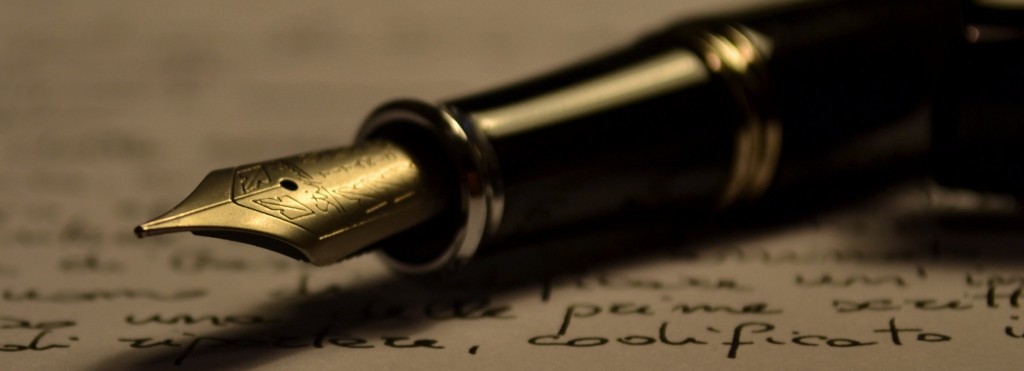
About the Author: Deacon Joseph Fessenden, Diocese of Nashville
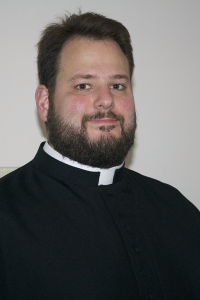
Deacon Joseph Fessenden is a seminarian for the Diocese of Nashville, Tennessee. Joe earned his undergraduate degree from the University of South Florida in English and American Literature. Prior to priestly formation, he was trained or worked as an actor, chef, computer programmer, and web designer (among others). When none of those offered him the happiness he sought, Joe finally followed God’s call to priestly service. He is looking forward completing priestly formation and receiving ordination in the summer of 2017.
This article and all of his writing can be found on his website at http://www.joefessenden.com.
Disclaimer
All opinions published by the authors on this blog are solely those of the authors. Although the goal is that they should, they do not necessarily express the views and opinions of the Archdiocese of New Orleans, Notre Dame Seminary, the Church, or their respective dioceses and bishops.
Notre Dame Seminary and the Archdiocese of New Orleans are not responsible for the comments of commenters, although every effort will be made to remove offensive comments.
If you should find an error or offensive content, please email the NDS Blog editorial team.

